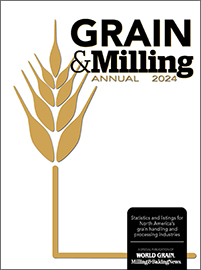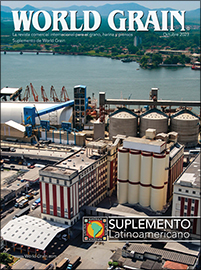
World’s major wheat importers
In the USDA's August World Agricultural Supply and Demand Estimates (WASDE) report, the world is projected to produce 779.60 million tonnes of wheat and provide 208.65 million tonnes for export in marketing year 2022-23.
These are the eight major wheat importing nations/regions by tonnes as listed in the monthly WASDE and their annual production projections.
Russia’s invasion of Ukraine in February and the persistent La Niña climate phenomenon have combined to create some of the most volatile market conditions in recent memory, sending prices skyrocketing as nations that depend on wheat to feed their populations scramble to secure supplies.
Each month, the WASDE releases new projections to reflect the most recent global market and production conditions, and this slideshow will be updated with those changes.

World's major wheat import regions.jpg

No. 1 North Africa
North Africa: The nations of Algeria, Egypt, Libya, Morocco and Tunisia are projected in the August WASDE to import 30.2 million tonnes of wheat together in 2022-23, up from 29.4 million tonnes in July and an increase from 27.35 million tonnes in 2021-22. The region is forecast to harvest 17.25 million tonnes of the grain in 2022-23. Photo: Adobe Stock

No. 2: Southeast Asia
Southeast Asia: A region that is composed of Indonesia, Malaysia, Philippines, Thailand and Vietnam is projected in the August WASDE to import 26.23 million tonnes of wheat in 2022-23, unchanged from July and up slightly from 26.0 million tonnes in 2021-22. These nations do not produce their own wheat. Photo: Adobe Stock

No. 3 Middle East
Middle East: Lebanon, Iraq, Iran, Israel, Jordan, Kuwait, Saudi Arabia, Yemen, United Arab Emirates and Oman represent 23.32 million tonnes of wheat imports for 2022-23 in the August WASDE, unchanged from July and up a bit from 23.05 million tonnes in 2021-22. The area is projected to harvest 17.59 million tonnes of the crop in 2022-23. Photo: Adobe Stock

No. 4 China
China: The world’s largest producer of wheat with the world’s largest population, China must buy wheat to meet demand, and the August WASDE projects the Asian nation to import 9.5 million tonnes in 2022-23, unchanged from July and a slight decrease from 9.7 million tonnes in 2021-22. China is projected to harvest 138 million tonnes of wheat in 2022-23, an increase of 3 million tonnes since the July WASDE.

No. 5 Bangladesh
Bangladesh: The tiny nation on the Bay of Bengal in Asia will import 7.0 million tonnes of wheat in 2022-23, according to the August WASDE, a drop from 7.5 million tonnes in 2021-22 and unchanged since the July report. Bangladesh is projected to produce only 1.1 million tonnes of wheat in 2022-23. Photo: Adobe Stock

No. 6 Nigeria
Nigeria: The West African nation of Nigeria on the Gulf of Guinea is projected in the August WASDE to import 6.5 million tonnes of wheat in 2022-23, up from 6.2 million tonnes in 2021-22 and unchanged from the July report. Nigeria is projected to produce just 110,000 tonnes of its own wheat in 2022-23. Photo: Adobe Stock

No. 7 Brazil
Brazil: The largest nation in South America, Brazil is shown in the August WASDE to import 6.4 million tonnes of wheat in 2022-23, unchanged from July's outlook but a slight decrease from 6.5 million tonnes in 2021-22. Brazil is expected to produce 8.7 million tonnes of wheat in 2022-23, up from 8.5 million tonnes in the July WASDE. Photo: Adobe Stock

No. 8 Japan
Japan: The Asian nation, which sits to the east of the Korean Peninsula and counts Russia and China as neighbors, will be expected to import 5.7 million tonnes of wheat in 2022-23, up from 5.5 million tonnes in the July report. This is up from 5.4 million tonnes imported in 2021-22. Japan is expected to produce 1.15 million tonnes of wheat in 2022-23. Photo: Adobe Stock


